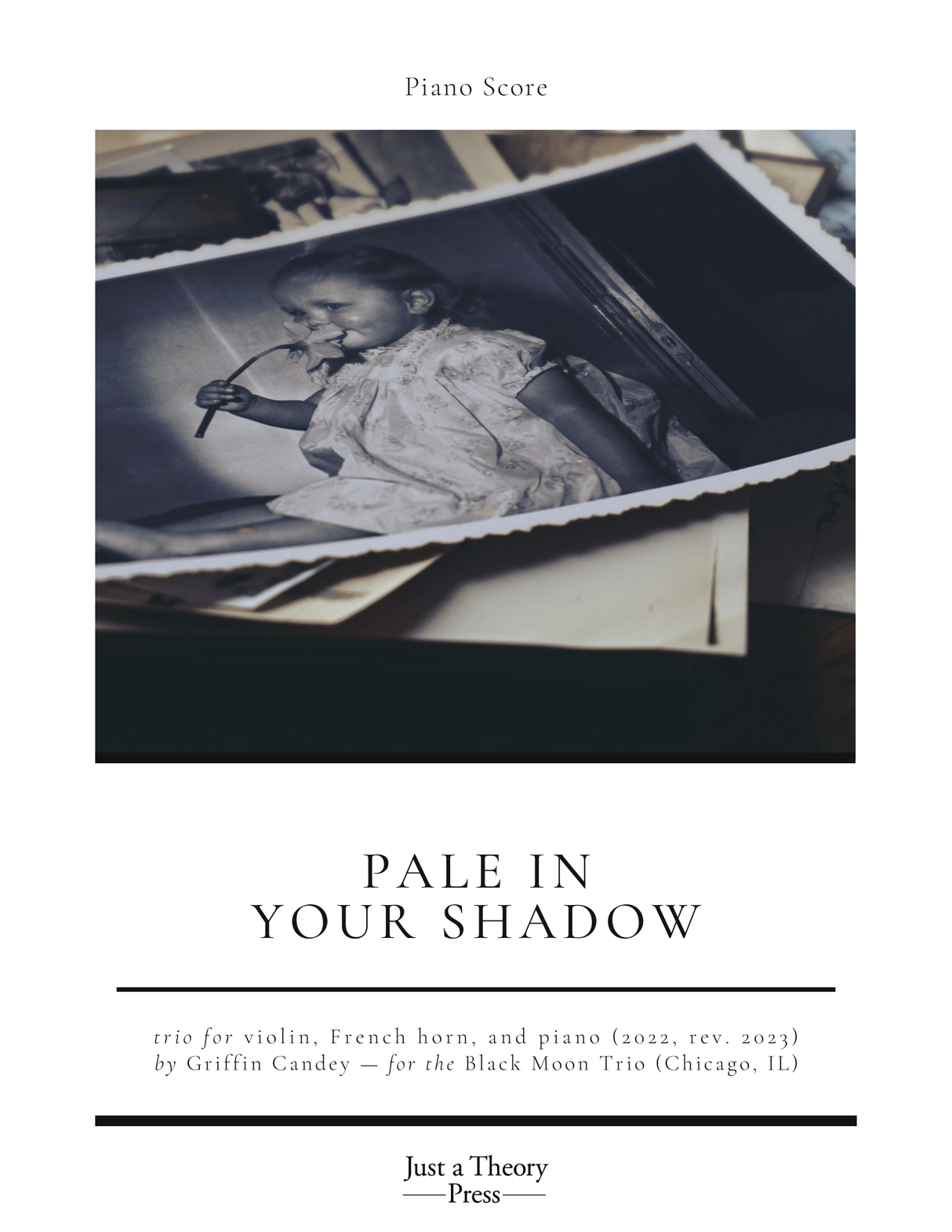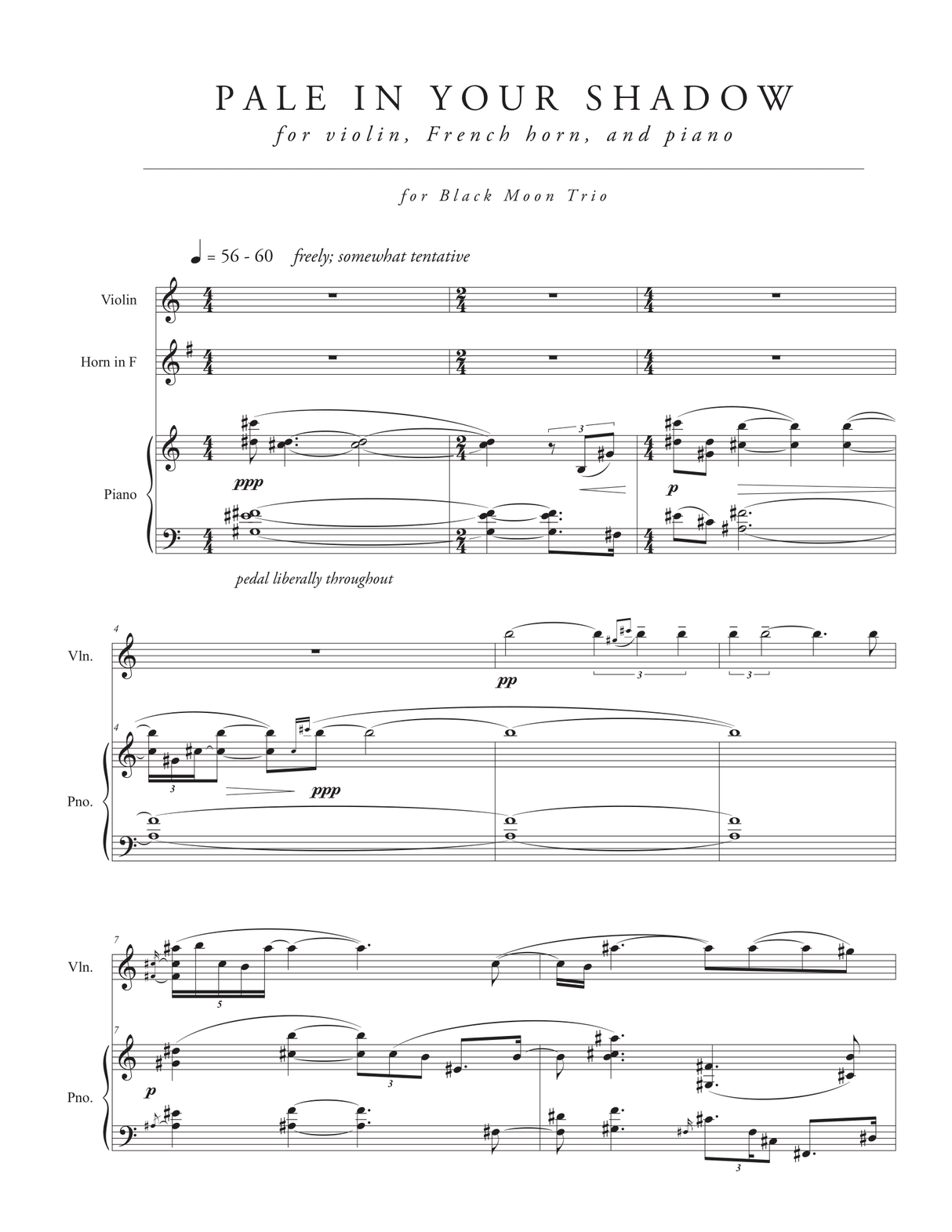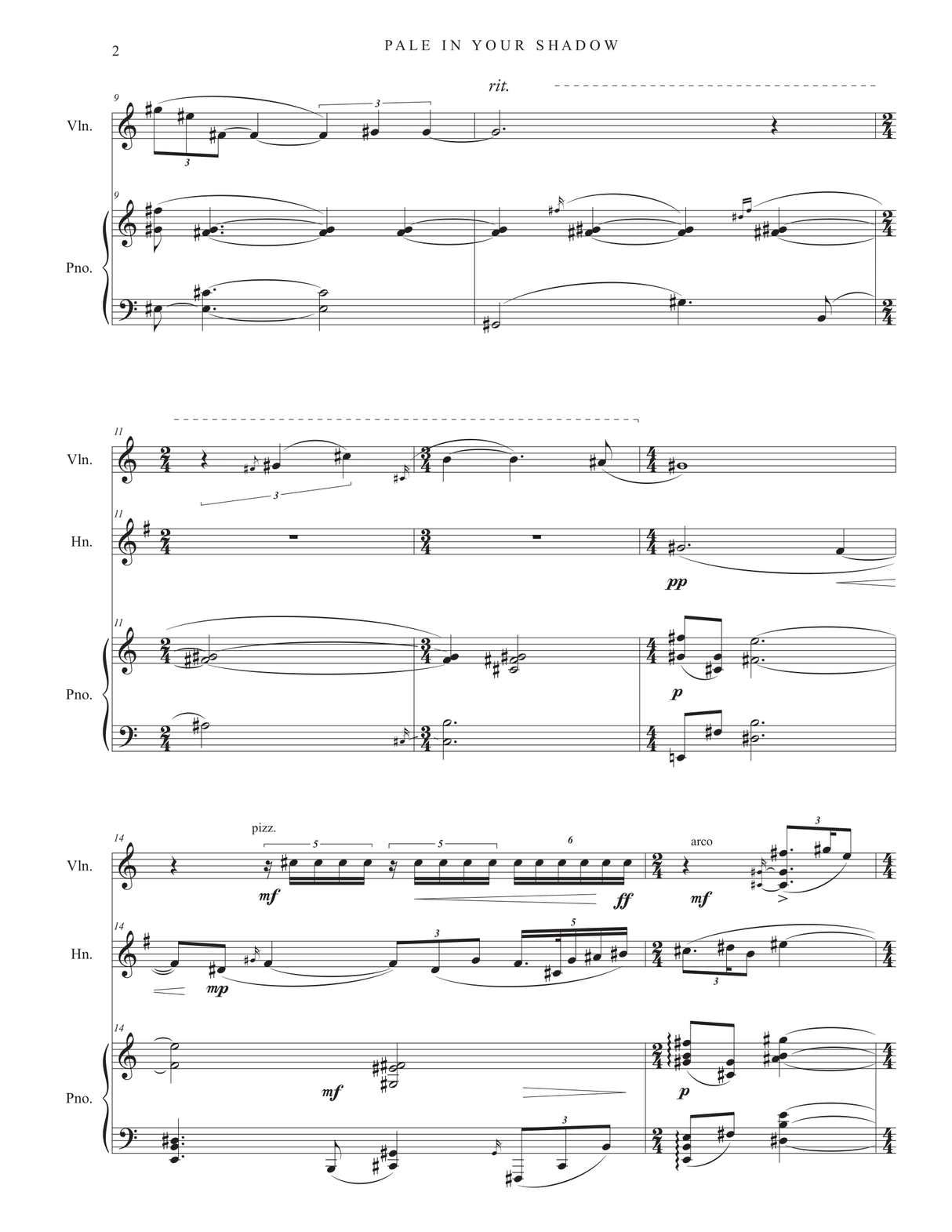Candey: Pale in Your Shadow (Version for Oboe, Horn, & Piano)
Expected to ship in 1-2 weeks.
- Composer: Griffin Candey (1988-)
- Format: Set of Parts
- Instrumentation: Piano, Oboe, Horn
- Work: Pale in Your Shadow (2023)
- Pages: 17
Description
Pale in Your Shadow, Griffin Candey
Versions: - Oboe, french horn, and piano (2022) 5' - Clarinet, french horn, and piano (2023) 5' - Violin, french horn, and piano (2023) 5'
Pale in Your Shadow, written for Fifth House Ensemble, responds to a question: what responsibility do we have for what happened before we were alive? The question, posed during the commission process, immediately brought to mind the concept of generational curses—specifically, breaking generational curses.
That language—"breaking curses"—summons up violent, physical imagery, a hammer blow to break the chains, to rid us of generational loose ends. It imagines our forebears as the antagonists and us as the protagonists, neatly delineating consequence and blame. in reality, intergenerational trauma often defies these neat definitions: some wounds are intentional, some not—some people had choices, some didn't—sometimes, someone's harmful actions grew from the broken circumstances they themselves inherited. in many cases, blame is warranted, but we only reach that space once we soften to a difficult reality: sometimes, those who caused the harm we inherit were simply people trying (if sometimes failing) to do their best. While this doesn't relieve anyone of blame, it might help us eventually redirect and reassess the destructive cycles.
Pale in Your Shadow approaches, in its own small way, that duality: moving between the desire to break curses with sheer force and the reality of breaking them with an openness of understanding.
Publishers use a lot of words to describe what they sell, and we know it can be confusing. We've tried to be as clear as possible to make sure you get exactly what you are looking for. Below are descriptions of the terms that we use to describe the various formats that music often comes in.
Choral Score
A score for vocalists that only contains the vocal lines. The instrumental parts are not there for reference. Generally, cheaper than a vocal score and requires multiple copies for purchase.
Facsimile
Reproductions of the original hand-written scores from the composer.
Full Score
For ensemble music, this indicates that the edition contains all parts on a single system (there are not separate parts for each player). In larger ensembles, this is for the conductor.
Hardcover
Hardbound. Generally either linen-covered or half-leather.
Orchestral Parts
Similar to a wind set, this is a collection of parts. In the case of strings, the numbers listed are the number of copies included, though generally these are available individually (often with minimum quantities required).
Paperback
When publishers offer multiple bindings (e.g. hardcover) or study scores, this is the "standard" version. If you're planning to play the music, this is probably what you want.
Performance / Playing Score
A score of the music containing all parts on one system, intended for players to share. There are not separate parts for each player.
Set of Parts
For ensemble music, this indicates that there are separate individual parts for each player.
Solo Part with Piano Reduction
For solo pieces with orchestra, this is a version that contains a piano reduction of the orchestra parts. For piano pieces, two copies are typically needed for performance.
Study Score
A small (think choral size) copy of the complete score meant for studying, and not playing. They make great add-ons when learning concertos and small chamber works.
Vocal Score
A score prepared for vocalists that includes the piano/organ part or a reduction of the instrumental parts.
Wind Set
For orchestral music, this is a collection of wind and percussion parts. The specific quantities of each instrument are notated.
With Audio
In addition to the printed music, the edition contains recordings of the pieces. This may be an included CD, or access to files on the internet.
With / Without Fingering (Markings)
Some publishers prepare two copies - a pure Urtext edition that includes no fingering (or bowing) suggestions and a lightly edited version that includes a minimal number of editorial markings.




